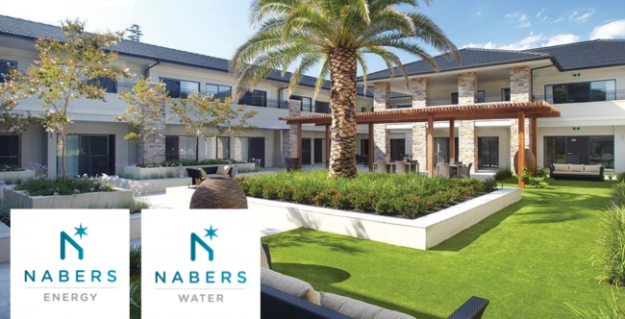
Released in late 2021 following demand for an environmental benchmarking tool for the aged care industry, two new rating types: NABERS for Residential Aged Care and NABERS for Retirement Living are now available for the industry which now allow portfolio or building owners to not only showcase the sustainability performance of their facilities but also highlight potential areas where significant improvements to both efficiency and costs can be made. Following a full desktop and in-person audit of your facility, your experienced Ausnviro assessor will be able to provide your facility with a NABERS Star rating of between 1 and 6, with 6 being the highest achievable rating awarded for maximum energy efficiency of your Aged Care or Retirement Living site.
Our experience is ongoing, with our first two certified ratings completed in early 2022 as seen below:
• HammondCare Wahroonga
• HammondCare Erina
NABERS ratings for Residential Aged Care facilities quantify your building’s energy and water performance by comparing your energy profile to those of a similar size and climate. By reviewing the energy use of services such as occupied bed days, heavy laundries, meals cooked and shared facilities such as heated pools, as well as assessing your monthly electricity, gas, diesel and water profiles for a 12-month period, your Ausnviro assessor will complete a thorough audit of your site in line with the NABERS Protocol. Unlike other corporate auditing service providers, your allocated Ausnviro assessor will be available to guide you through the entire a process and answer any questions you have along the way.
NABERS ratings for Retirement Living facilities quantify your building’s energy and water performance by comparing your energy profile to those of a similar size and climate. By reviewing the comparable variables within the common property areas of your site including number of dwellings and serviced apartments on site, the area of your retirement village, any provided meals and any pools onsite, as well as assessing your monthly electricity, gas, diesel and water profiles for a 12-month period, your Ausnviro assessor will complete a thorough audit of your site in line with the NABERS Protocol. Unlike other corporate auditing service providers, your allocated Ausnviro assessor will be available to guide you through the entire a process and answer any questions you have along the way.
If your site offers both residential aged care homes and a retirement living village within the same site boundaries, your Ausnviro assessor will be able to explain to you how you can complete a combined Energy Rating for your co-located sites.
Please enquire about this rating type through info@ausnviro.com.au or call 1300 622 377.
1. To start things off, you’ll need 12 months’ historical data on your energy and/or water consumption and some evidence about the size and features of your building. Your Ausnviro assessor will advise you on what you need to provide through a comprehensive documentation request.
2. Once your assessor has processed through all of your documentation and has an early understanding of the site, they will contact you to book a date for a NABERS site inspection. You will need to organise access for your assessor to all back of house parts of your facility, including plant rooms, metering cupboards and functional spaces such as heavy laundries.
3. The site inspection will run over one day and the time taken will depend on the size of your site. Your assessor will use the site inspection to validate all of the site information provided and to locate any additional energy end uses. Please note: based on the sensitivities of these sites, your Ausnviro assessor will ensure your site inspection will be non-intrusive to any resident activities, nor will any personal resident areas need to be accessed.
4. Following the site inspection, your assessor will take some time to process all their notes and findings from site. They may request some further documentation from you at this time.
5. Once everything is processed and your assessor is happy with the level of evidence and information gathered, they will reach out to you start the lodgement process. At this time, you will be given your rating/s results, after which you will approve them and assist with lodging the ratings. You may choose to make your ratings publicly viewable or private.
6. Your rating/s will be then sent to the NABERS Department for a final review, after which your certified rating/s will be issued to you.

Ausnviro are very excited to be participating in the 2019 MS Half Marathon at Flemington Racecourse! On the 31st of March 2019, all members of the Ausnviro team will be completing a run, ranging from 5km to the half marathon.
We are proud to be raising money for people living with multiple sclerosis, it is one of the most common diseases of the central nervous system in young adults and there is no currently no cure.
The event has currently raised over $130,000 and we hoping to boost that as much as possible! So please donate towards supporting our challenge and help assist people living with multiple sclerosis.
You can find details of how to donate on the Ausnviro Team page here.

NABERS has just released their Draft Strategic Plan outlining their goals and focus for the next five years.
Their vision for the years 2019 to 2023 is to work across all areas of the built environment, not just the sectors they have previously engaged in (commercial office, shopping centres, apartments, hotels and data centres). NABERS aim to expand their range to include schools, industrial and retail buildings as well as healthcare centres. There is also the potential to extend the reach of the NABERS program internationally.
NABERS is helping the widespread push towards net-zero environmental targets, aligning with the recent movement adopted by industries and councils. It is good to see transparency about updating protocols and existing tools to reflect trends and policy changes that affect the buildings rated under the scheme, as well as increased focus on responding to user feedback.
One of the main points of attention is the updated NABERS tools that will not only be used for auditing purposes, but will also provide extra value to users by allowing for regular monitoring and reporting. This will be achieved by streamlining systems that allow for the seamless integration of updates and technical improvements. The latest tool update for NABERS Waste (released late 2018) reflects this by being more user friendly and allowing for the continual monitoring of the building’s waste management performance. Tools and processes will also be adapted to prepare for a greater volume of ratings coming through, as well as an increased number of NABERS accredited assessors to keep up with demand.
It seems that NABERS are pushing out the goal posts for the coming years and will develop an implementation plan to ensure the progress of the strategic plan’s two major goals.
The Draft Strategic Plan is open to consultation, so if you would like to provide feedback click on the link here to complete the survey:
A copy of the draft plan can be accessed here.
For more information about NABERS, please feel free to contact me at hash(at)ausnviro.com.au
By Jess Harrison

Australia’s urban environment is expanding at a rapid rate. With a growing population across our major cities comes greater demand for what may soon be the most precious resource in the world: water.
This is particularly pertinent for the management of office buildings, who must learn to adapt and better manage the water used to supply cooling towers, boilers, and end-of-trip facilities.
As we learned in the drought of the early 2000s, times of water stress bring about tough new restrictions and it is crucial that the commercial office sector anticipates this, and responds before it is too late.
How does the NABERS Water tool factor in?
In the 2017-18 financial year, there were just 31 office buildings in Australia that held a certified NABERS Water rating of 5.5 Stars or above. To contrast this against the same parameters for NABERS Energy: 218 office buildings held a rating of 5.5 Stars or greater in the same time period.
The crux of the difference is that a NABERS Energy Rating, more often than not, is a legal obligation for an office building owner to obtain in order to comply with the BEED Act of 2010.
With severe water stress and droughts predicted to affect parts of Australia within the next five years, now is the time to act to achieve a high NABERS Water Rating before this becomes a mandatory process.
A NABERS Water Rating can be conducted as a standalone rating, however many building owners opt to have this conducted alongside their yearly NABERS Energy Rating. The documentation required is identical, with the addition of 12 consecutive months of utility water bills. This makes the process easier and more cost-effective.
What can I do?
“If you can’t measure it, you can’t improve it.”
The first step is to obtain a benchmark NABERS Water Rating. This will provide an idea of where your building sits in terms of water consumption, compared to buildings of a similar size and composition. It will also allow the comparison of water savings, in both kL and dollar terms.
Once this has been completed, Ausnviro can provide specific targets to achieve an improved NABERS Water Rating, as well as detailed suggestions for water efficiency upgrades.
To discuss your NABERS Water Rating, please contact Jess Harrison on 0466 972 949 or jessica (at) ausnviro.com.au.
By Stacey Ward
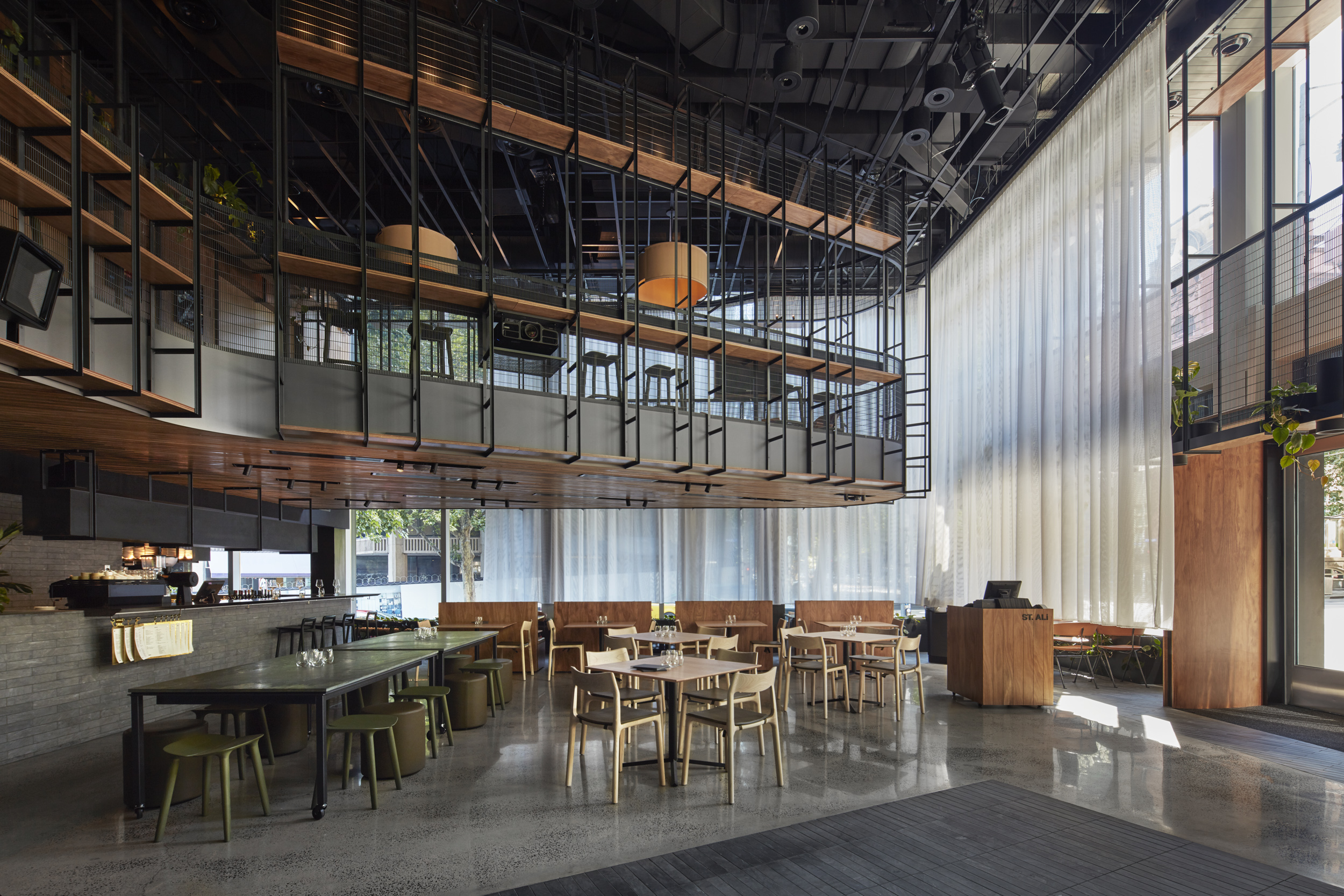
Ausnviro is pleased to announce that we have been engaged by Mercedes me to assist their Melbourne concept store in extending their sustainability targets to include waste management. Ausnviro will be working with Mercedes-Benz’s seventh international concept store to maximise the recycling potential of the tenancy and streamline waste efficiency. Mercedes me have embraced the benefits associated with improved waste efficiency, contracting Ausnviro to implement a range of waste services, including auditing, Strategic Waste Management Plan™ development and implementation and installation of an onsite weighing system.
Mercedes me will be utilising Ausnviro’s customised onsite weighing system to monitor the store’s daily waste generation and track improvements as they are made. Ausnviro’s weighing system brings integrity back to tenancy waste data enabling accurate monitoring of waste generation and invoicing. As a result of Ausnviro’s system, Mercedes me will be able to track and promote their waste results and increase the transparency of their sustainability achievements regarding waste.
An initial analysis and snapshot audit has identified significant potential for the store, and we are looking forward to assisting Mercedes me in their journey to achieving their full waste management potential.
For more information regarding Ausnviro’s holistic waste services, please contact lead waste consultant Stacey Ward on 0431 920 336 or at stacey(at)ausnviro.com.au.
By Hash Fonseka
Earlier this year after much anticipation, NABERS released their new Waste Rating Platform, allowing more buildings to participate and receive a certified NABER Waste Rating.
There are two major changes to note: the first being that the tool is now online and can be easily accessed by building managers, and the second that the mandatory requirement of a two week long audit process has been replaced with a once-off audit, making it easier than ever to get a rating completed for many commercial buildings. The updated version of the rules (V1.1) released only days ago, introduces whole building ratings as well as an adjustment to the rating scale. As a result of this adjustment the maximum rating achievable by a base building is 6.5 stars correlating to a recycling rate of above 81% and above 92% for a whole building.
The flexibility of the tool allows for buildings of varying sizes and capacities to gain an indication of their recycling rates, with multiple layers of integrity that can be applied. Buildings hoping to achieve top results would aim towards an ‘excellent’ standard of data quality assessment involving data verification, onsite weighing and an audit run by a NABERS accredited assessor.
Since the release of the NABERS Waste Platform, Ausnviro have been working across multiple commercial sites implementing our Waste Manager App™ and onsite weighing system to help buildings reach the highest level of data quality. Throughout this process our biggest takeaway is that data integrity is key to understanding the recycling habits of a building, in order to create positive change. By having a detailed understanding of the waste habits and processes in place, we are able to provide tailored initiatives to improve the performance of the site, as well as continuously monitor for any unexpected changes that may occur.
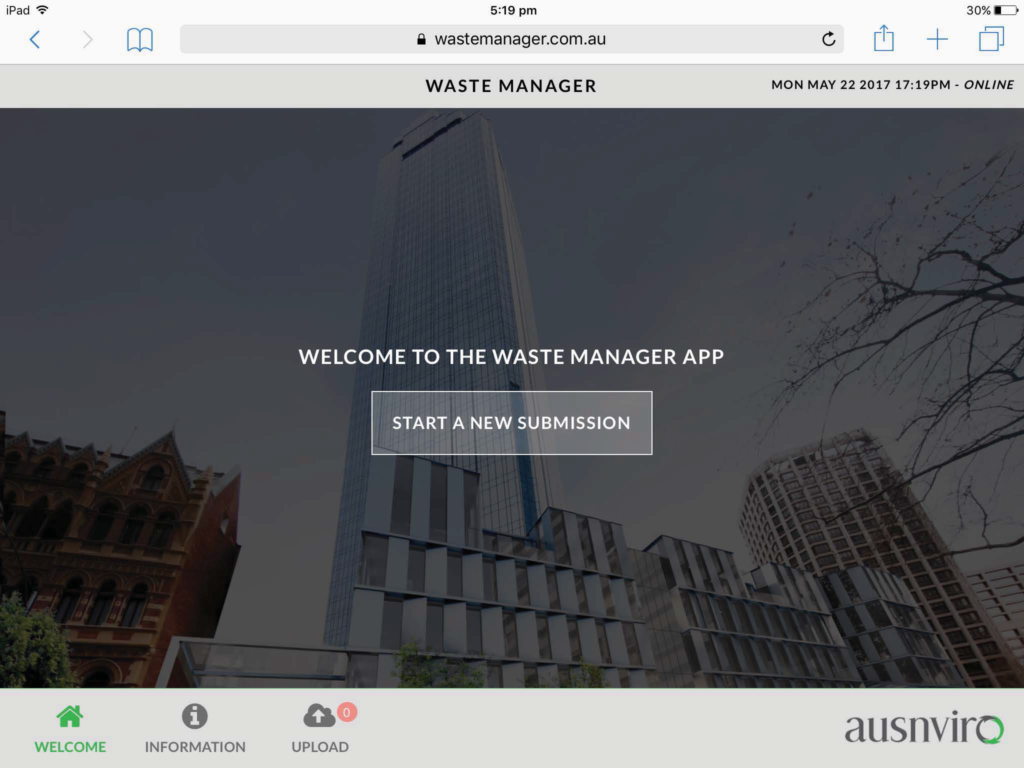
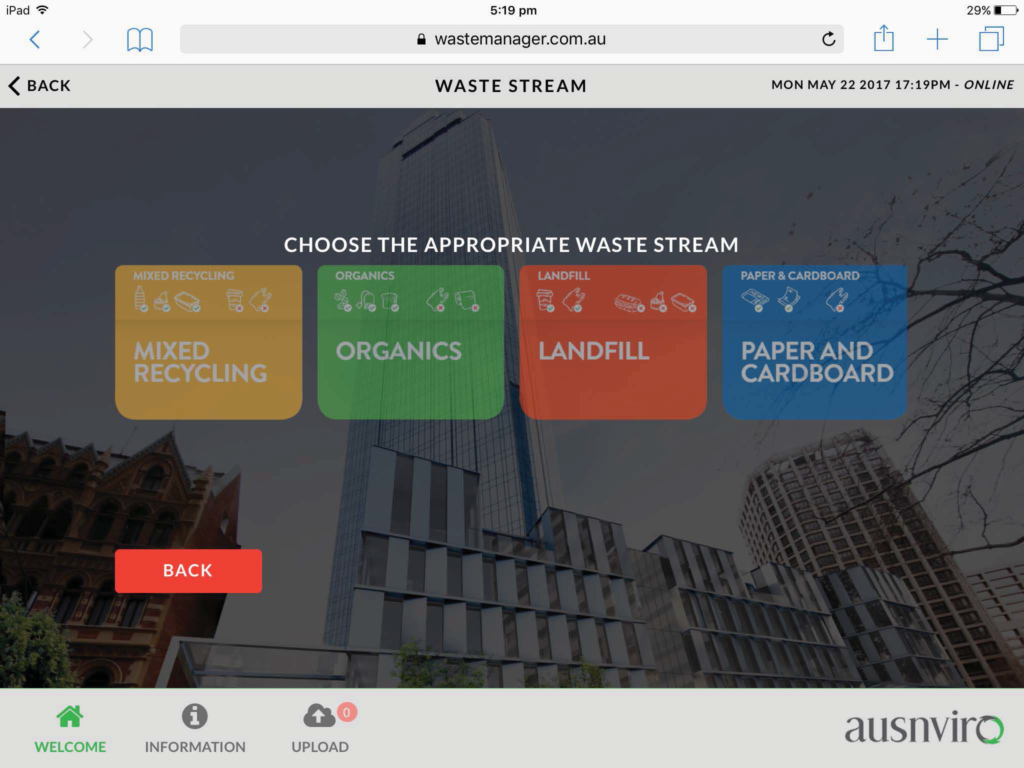
We look forward to assisting these buildings in monitoring their waste performance and achieving their recycling targets in the coming years, and anticipate that the new waste platform will be embraced by many waste-conscious commercial buildings in the near future.
For any enquiries regarding our onsite weighing system or the new NABERS Waste Rating tool, please contact Hash Fonseka (0468 791 121) hash(at)ausnviro.com.au or Stacey Ward (0431 920 336) stacey(at)ausnviro.com.au.
By Alex Hardingham
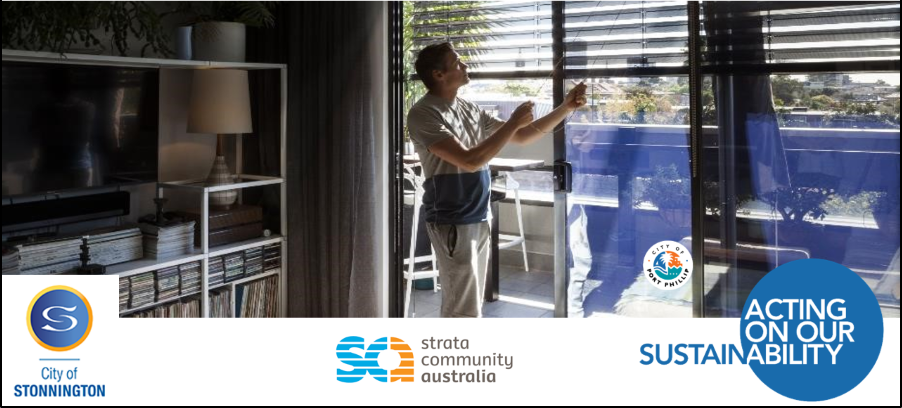
It was a great pleasure to speak on behalf of Ausnviro last week at the Sustainability Session “Apartments: Building a Business Case for Sustainable Changes” organised by City of Port Phillip, City of Stonnington and Strata Community Association.
I was very interested to hear the other speakers share their experiences driving sustainable changes in the high-density residential sector, with Julie Mclean from Ace Body Corporate Consulting, running us through developing a business case for sustainability, Daniel Beaton from Moreland Energy Foundation discussing the fundamentals of installing solar and the challenges that come with it, Jeff Elliot providing first hand experience into what it takes to enact sustainable changes within an apartment block and Rochelle Castro from RC & CO Lawyers providing an overview on the legal side of owners corporations.
Ausnviro covered the background of NABERS, its establishment in the commercial office sector, and how residential lot owners can benefit from the newly developed NABERS for Apartments tool. We were also able to share our experience in completing some of the very first NABERS for Apartments ratings in Australia, with 33 residential buildings rated in the City of Melbourne Pilot study.
It is very exciting to see the interest from various Owners Corporations regarding the NABERS Apartments benchmarking tool, and we expect to see the same benefits that were associated with the initial implementation of the NABERS Program in the commercial office sector. The potential for reducing energy and water costs and subsequent Owners Corporation fees, as well as driving down greenhouse gas emissions are just two of the key incentives for completing a NABERS for Apartments rating.
Ausnviro can facilitate all types of energy efficiency works. If you would like to discuss a NABERS for Apartments rating, please email me at alex(at)ausnviro.com.au or give me a call on 0481 355 769.
By Jess Harrison

NABERS has recently been authorised by the Department of Environment and Energy to provide Carbon Neutral Certification to the National Carbon Offset Standard, in conjunction with a NABERS Energy Rating.
In order to be eligible, buildings must hold an existing 4 Star NABERS Energy Rating, or have made a formal commitment to achieve this within three years. For office ratings, only whole buildings and base buildings can be certified – unfortunately this means that tenancies are not eligible at this stage.
The data required to complete the certification incorporates the usual data associated with NABERS Energy, NABERS Water, and NABERS Waste ratings. Carbon offsets are then purchased to reduce remaining emissions down to zero.
Ausnviro expects that this will appeal to building owners or managers looking to holistically assess their energy consumption and waste output, while going the extra mile by becoming carbon neutral certified. This is an excellent way for high-performing buildings to demonstrate additional commitment to emissions reduction, and to stand out from the crowd in a growing market of premium grade, energy efficient assets. With many government bodies now committing to carbon neutrality by 2020, it is anticipated that demand for carbon neutral office space will grow rapidly in the next few years.
For further information regarding Carbon Neutral Certification, please contact accredited assessor Jess Harrison on 0466 972 949 or jessica(at)ausnviro.com.au.
City of Melbourne has been oversubscribed for this initiative in which 20 apartment buildings have been selected to have NABERS energy and water ratings undertaken.
The average size of each apartment building selected is 240 apartments. With flagship buildings selected such as QV1 Apartments consisting of 467 apartments.
The Ausnviro team and representatives from City of Melbourne travelled to Sydney this week to undertake training for the brand new tool. Accreditation is expected to be awarded shortly with the NABERS assessments kicking off in May.
I am blown away by the robustness of the new NABERS for Apartments tool. There is no doubt in my mind this new system will dramatically improve environmental efficiency in the residential apartment sector. – Jay Gualtieri, Managing Director, Ausnviro. Owners and operators of apartment buildings can save money by improving the energy and water efficiency of their building, but first they need to know how their building is performing.
NABERS tools have proven highly effective in the commercial building sector. They have allowed building owners to better understand their assets’ performance, and provided a metric on which numerous policy and incentive schemes have been built.
Figures from NABERS revealed the office sector is now saving more than $100 million a year in power bills compared to 2010 levels. This has resulted in annual CO2 emissions savings of more than 635,000 tons, equivalent to taking more than 160,000 cars off the road. Leading industry figures are hopeful that a NABERS Energy for apartment buildings tool, combined with the right policies, can set the residential sector on a similar path.
For more information email info@ausnviro.com.au or call 1300 622 377

The 60 km/h northerly winds and 210 km of terrain were well worth the uphill battle to raise money for disadvantaged Australian kids when supporting The Smith Family “Ride for a Child in need” in Around the Bay 2016.
The Ausnviro team which consisted of Jay Gualtieri and Hattie Houghton and friend of Ausnviro Andrew Cogger departed Alexandra Gardens at 6am, travelled through Mordialloc to the Sorrento turnaround point then made their way back to Melbourne, via iconic Beach Road, to the finish line in Alexandra Gardens. Their 12-hour journey with 535 other participants was an experience. “The sand in the eyes and averaging 15km per hour from Sorrento to Melbourne was not a great feeling, but knowing you’re doing it to help Aussie kids makes it all worthwhile” says Jay Gualtieri.
This is the first year Ausnviro has participated in this cycling event but are now committed to continue in 2017 with a bigger team and a longer ride.” This was one of the most gruelling rides and pushing through to the end was tough but it was great to be riding with so many people and working towards the same goal. I’m ready to do it again next year” says Hattie Houghton.
$576 supports a child for a year in primary education and it’s still not too late to support the Ausnviro team. You can donate until the 31 October and help reach the $1.2m goal.
http://my.aroundthebayfundraising.com.au/jaygualtieri
http://my.aroundthebayfundraising.com.au/hattiehoughton
